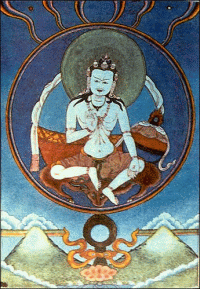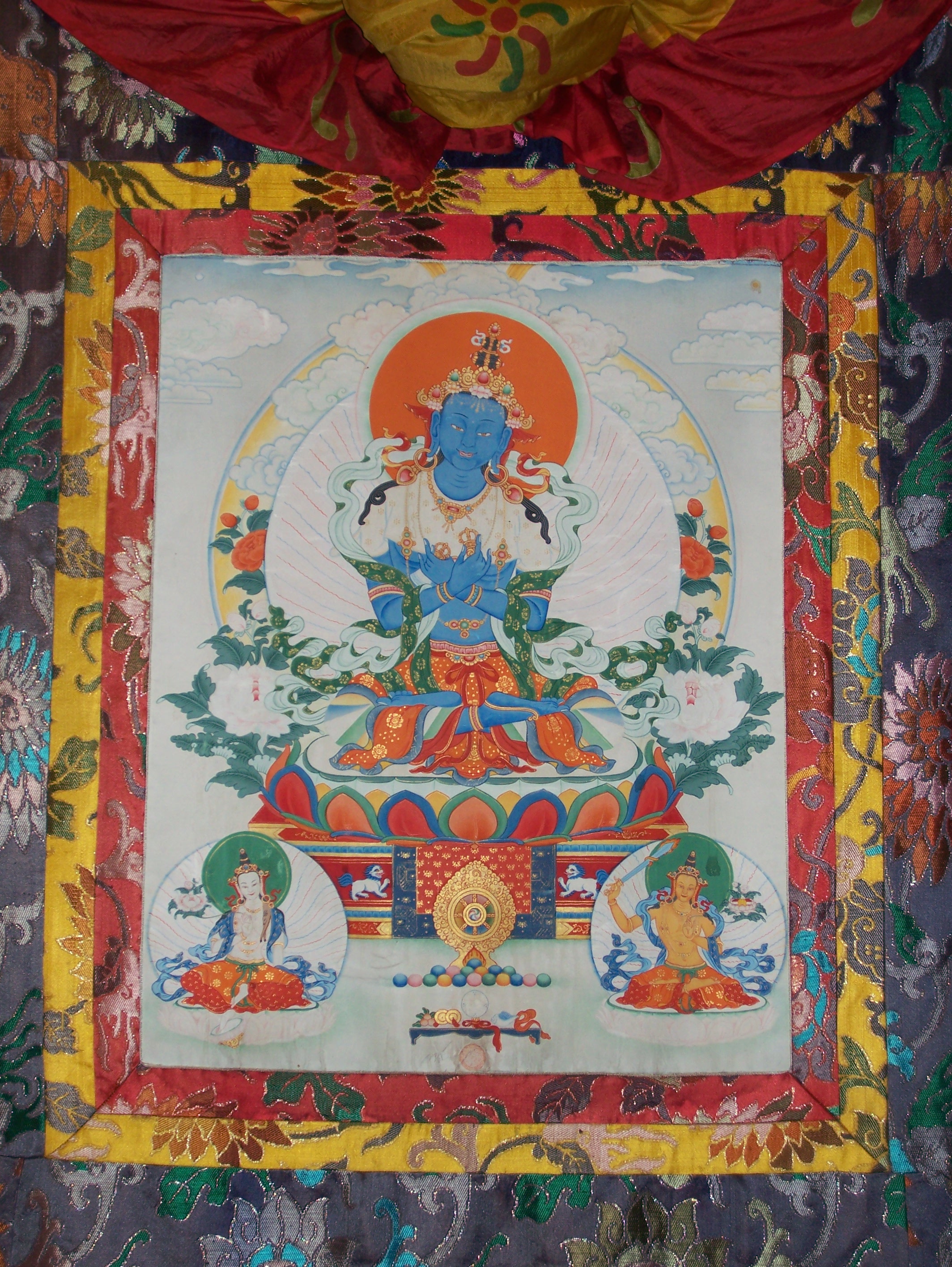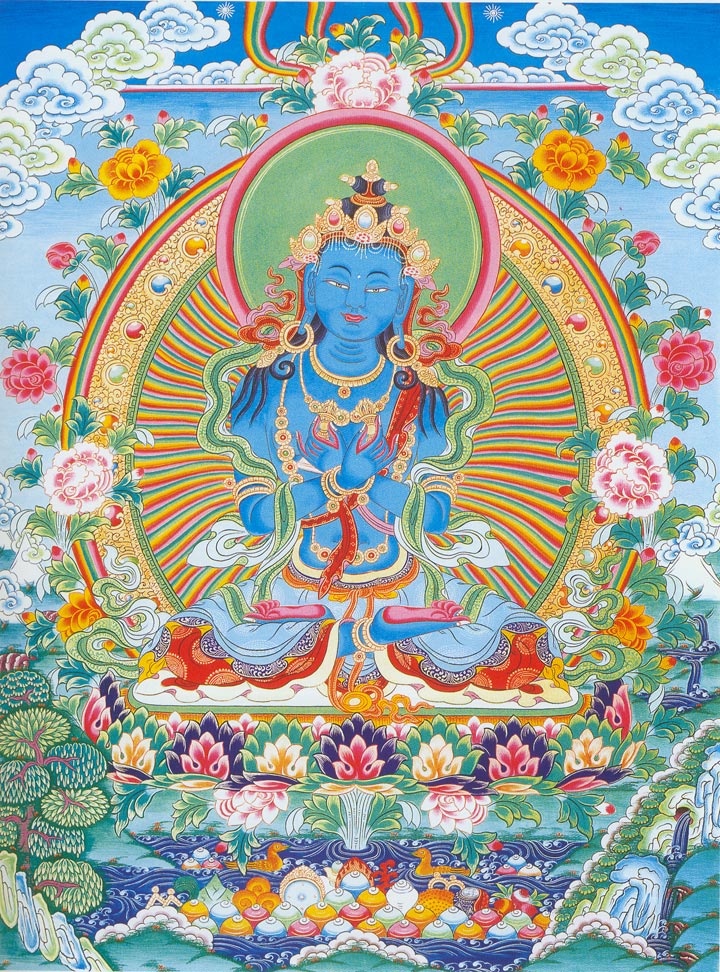|
Palyul Monastery
Palyul Monastery (), also known as Palyul Namgyal Jangchub Choling Monastery and sometimes romanized as Pelyul Monastery, is one of the "Six Mother Monasteries" of the Nyingma tradition of Tibetan Buddhism. It was founded in 1665 by Rigzin Kunzang Sherab in Dege, on the eastern edge of Tibet in Kham, a town in today's Baiyü County, Garzê Tibetan Autonomous Prefecture in China's Sichuan province. The monastery is the seat of the Nam Chö Terma of Terton Migyur Dorje. Drubwang Padma Norbu (Penor Rinpoche) was the 11th throneholder of the Palyul lineage. Upon his mahaparinirvana in March, 2009, Karma Kuchen Rinpoche became the 12th throneholder. Namdroling Monastery in Bylakuppe, India, is where the current throneholder to the Palyul lineage has resided since exile from Tibet during Chinese annexation. Dzogchen Lineage of Palyul * Chöku Kuntuzangpo ( Dharmakaya Samantabhadra) * Drugpa Dorjé Changchen (Vajradhara) * Dorje Sempa (Vajrasattva) * Thugjé Chenpo Chenrez ... [...More Info...] [...Related Items...] OR: [Wikipedia] [Google] [Baidu] |
Penor Rinpoche
Kyabjé Drubwang Padma Norbu Rinpoche (), 1932 – 27 March 2009, was the 11th throneholder of the Palyul Lineage of the Nyingma school of Tibetan Buddhism, and said to be an incarnation of Vimalamitra. He was widely renowned in the Tibetan Buddhist world as a master of Dzogchen. He was one of a very few teachers left from his generation who received all his training (in the traditional sense) in Tibet under the guidance of what Tibetan Buddhists consider to be fully enlightened teachers. Biography Life in Tibet The Third Drubwang Padma Norbu Rinpoche, Thubten Legshed Chokyi Drayang (), also known as Do-ngag Shedrub Tenzin Chog-lei Namgyal () was born in 1932, the year of the Water Monkey, in the twelfth month, in the Powo region of Kham, East Tibet. He was recognized in 1936 by the Fifth Dzogchen Rinpoche (Thubten Chokyi Dorje) anKhenpo Ngawang Palzang(also known as Khenchen Ngagi Wangchuk, Ngawang Palzangpo, or Khenpo Ngagchung). Padma Norbu was formally enthroned by his roo ... [...More Info...] [...Related Items...] OR: [Wikipedia] [Google] [Baidu] |
Jnanasutra
There appear to be two Jnanasutras, with different Tibetan orthographies for their names. The first, , flourished from the 5th-6th centuries. According to Dzogchen legends, he was an early Dzogchen practitioner of Vajrayāna Buddhism and a disciple of Sri Singha. This Jnanasutra was a spiritual brother of Vimalamitra, another principal disciple of Sri Singha. According to Tarthang Tulku (1980), the second ''Jnanasutra'' was the principal lotsawa () of the 8th-9th century of the first wave of translations from Sanskrit to Tibetan.Rhaldi, Sherab (undated). 'Ye-Shes-sDe; Tibetan Scholar and Saint'. ''Tibetan & Himalayan Digital Library''. Source(accessed: Wednesday April 1, 2009) In Jigme Lingpa's terma of the ngöndro of the Longchen Nyingthig he writes what approximates the phonemic Sanskrit of 'Jnanasutra' in Tibetan script as , rather than his name in Tibetan and this comes just after a sentence to Sri Singha and before mentioning Vimalamitra. See also *Menngagde In Tibeta ... [...More Info...] [...Related Items...] OR: [Wikipedia] [Google] [Baidu] |
Garab Dorje
Garab Dorje (c. 665) () was the first human to receive direct transmission teachings from Vajrasattva. Garab Dorje then became the teacher of the ''Ati Yoga'' (Tib. Dzogchen) or Great Perfection teachings according to Tibetan buddhist and Nyingma school traditions. The Tibetan Bon beliefs, which pre-date buddhism, differ in their origin story of Dzogchen. Etymology Garab Dorje (or Garap Dorje) is his only attested name. The Sanskrit offerings are reconstructions. No Sanskrit name has been found in a colophon. That said, John Myrdhin Reynolds cited Prahevajra or Pramodavajra in his book ''Self-Liberation Through Seeing with Naked Awareness'' ig pa ngo sprod gcer mthong rang grol Detail According to the Nyingma school of Tibetan Buddhism, Garab Dorje transmitted the complete empowerments of Dzogchen to Manjushrimitra, who was regarded as his chief disciple. Padmasambhava is also known to have received the transmission of the Dzogchen tantras directly from Garab Dorje. Garab Dor ... [...More Info...] [...Related Items...] OR: [Wikipedia] [Google] [Baidu] |
Vajrasattva
Vajrasattva ( sa, वज्रसत्त्व, Tibetan: རྡོ་རྗེ་སེམས་དཔའ། ''Dorje Sempa'', short form is རྡོར་སེམས། ''Dorsem'', Монгол: Доржсэмбэ) is a bodhisattva in the Mahayana, Mantrayana/Vajrayana Buddhist traditions. In Chinese Buddhism and the Japanese Shingon tradition, Vajrasatva is the esoteric aspect of the bodhisattva Samantabhadra and is commonly associated with the student practitioner who through the master's teachings, attains an ever-enriching subtle and rarefied grounding in their esoteric practice. In Tibetan Buddhism Vajrasatva is associated with the sambhogakāya and purification practice. Vajrasatva appears principally in two Buddhists texts: the '' Mahavairocana Sutra'' and the '' Vajrasekhara Sutra''. In the Diamond Realm Mandala, Vajrasatva sits to the East near Akshobhya Buddha. In some esoteric lineages, Nagarjuna was said to have met Vajrasatva in an iron tower in South India, ... [...More Info...] [...Related Items...] OR: [Wikipedia] [Google] [Baidu] |
Vajradhara
Vajradhara (Sanskrit: वज्रधर. (Also, the name of Indra, because 'Vajra' means diamond, as well as the thunderbolt, anything hard more generally) Tibetan: རྡོ་རྗེ་འཆང། rdo rje 'chang (Dorje Chang); zh, t=金剛總持, p=Jīngāng zǒng chí; Javanese: Kabajradharan; Japanese: 持金剛仏; English: Diamond-holder; Vietnamese: Kim Cang Tổng Trì) is the ultimate primordial Buddha, or Adi-Buddha, according to the Sakya, Gelug and Kagyu schools of Tibetan Buddhism. In the evolution of Indian Buddhism, Buddha Vajradhara gradually displaced Samantabhadra, who is the 'Primordial Buddha' in the Nyingma, or 'Ancient School.' However, the two are metaphysically equivalent. Achieving the 'state of Vajradhara' is synonymous with complete realisation. According to the Kagyu lineage, Buddhā Vajradhara is the primordial Buddha, the Dharmakaya Buddha. He is depicted as dark blue in color, expressing the quintessence of buddhahood itself and represen ... [...More Info...] [...Related Items...] OR: [Wikipedia] [Google] [Baidu] |
Adi-Buddha
In Vajrayana Buddhism, the Ādi-Buddha () is the "First Buddha" or the "Primordial Buddha". Another common term for this figure is Dharmakāya Buddha. The term emerges in tantric Buddhist literature, most prominently in the Kalachakra.Buswell, Robert E.; Lopez, Jr., Donald S. (2013). ''The Princeton dictionary of Buddhism''. Princeton: Princeton University Press. . Entry on "ādibuddha". "Ādi" means "first", such that the Ādibuddha was the first to attain Buddhahood. "Ādi" can also mean "primordial", not referring to a person but to an innate wisdom that is present in all sentient beings. In Indo-Tibetan Buddhism In Indo-Tibetan Buddhism, the term Ādibuddha is often used to describe the Buddha Samantabhadra (in Nyingma), Vajradhara or Kalachakra (in the Sarma schools).Wayman, Alex; The Buddhist Tantras: Light on Indo-Tibetan esotericism, page 53. There was also a tradition in India which saw Mañjuśrī as the Ādibuddha, as exemplified by Vilāsavajra's commentary ... [...More Info...] [...Related Items...] OR: [Wikipedia] [Google] [Baidu] |
Incorporation Of Tibet Into The People's Republic Of China
Tibet came under the control of People's Republic of China (PRC) after the Government of Tibet signed the Seventeen Point Agreement which the 14th Dalai Lama ratified on 24 October 1951, but later repudiated on the grounds that he rendered his approval for the agreement while under duress. This occurred after attempts by the Tibetan Government to gain international recognition, efforts to modernize its military, negotiations between the Government of Tibet and the PRC, and a military conflict in the Chamdo area of western Kham in October 1950. The series of events came to be called the "Peaceful Liberation of Tibet" by the Chinese government, and the "Chinese invasion of Tibet" by the Central Tibetan Administration and the Tibetan diaspora. The Government of Tibet and the Tibetan social structure remained in place in the Tibetan polity under the authority of China until the 1959 Tibetan uprising, when the Dalai Lama fled into exile and after which the Government of Tibet and ... [...More Info...] [...Related Items...] OR: [Wikipedia] [Google] [Baidu] |
India
India, officially the Republic of India (Hindi: ), is a country in South Asia. It is the seventh-largest country by area, the second-most populous country, and the most populous democracy in the world. Bounded by the Indian Ocean on the south, the Arabian Sea on the southwest, and the Bay of Bengal on the southeast, it shares land borders with Pakistan to the west; China, Nepal, and Bhutan to the north; and Bangladesh and Myanmar to the east. In the Indian Ocean, India is in the vicinity of Sri Lanka and the Maldives; its Andaman and Nicobar Islands share a maritime border with Thailand, Myanmar, and Indonesia. Modern humans arrived on the Indian subcontinent from Africa no later than 55,000 years ago., "Y-Chromosome and Mt-DNA data support the colonization of South Asia by modern humans originating in Africa. ... Coalescence dates for most non-European populations average to between 73–55 ka.", "Modern human beings—''Homo sapiens''—originated in Africa. Then, interm ... [...More Info...] [...Related Items...] OR: [Wikipedia] [Google] [Baidu] |





